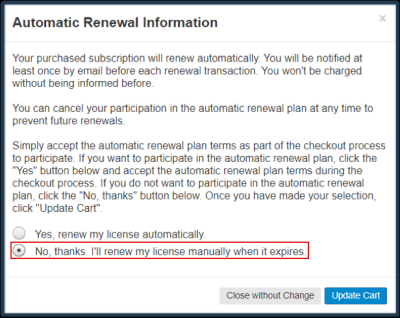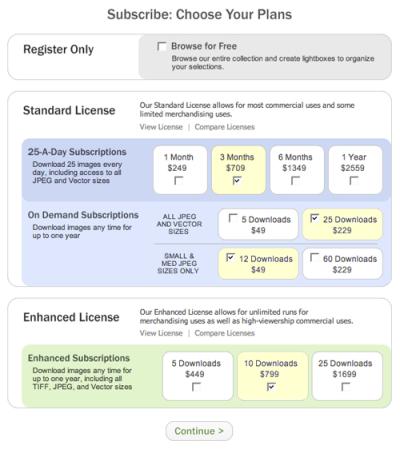Thinking about turning your photos and videos into a side income? Shutterstock is a popular platform for creators looking to monetize their visual content. Whether you’re a hobbyist photographer or a professional videographer, Shutterstock offers a straightforward way to earn money by sharing your work with a global audience. But how much can you really make? In this post, we’ll explore what
Understanding Shutterstock and Its Revenue Model

Shutterstock is one of the largest online marketplaces for stock photos, videos, illustrations, and music. It connects creative contributors with millions of buyers worldwide — from small businesses and marketers to media companies and educators. As a contributor, you upload your content, and when someone downloads it, you earn a commission.
So, how does the revenue model work? Here are some key points:
- Royalty-based system: Shutterstock pays contributors a percentage of the sale price for each download. The percentage varies depending on your contributor level and whether the buyer has a subscription or makes a one-time purchase.
- Pricing structure: Buyers can purchase content via subscriptions (monthly plans) or on a pay-per-download basis. Subscription plans tend to generate more downloads, but with lower per-download earnings, while single purchases can bring in higher royalties.
- Contributor levels and earnings: Shutterstock has a tiered system based on your lifetime earnings. New contributors start at a basic level, earning around 15-30% per download, while top contributors, who have earned over a certain threshold, can earn up to 30-40%.
It’s also important to note that your earnings depend on the quality and popularity of your content. Popular images and videos with broad appeal tend to generate more downloads, increasing your income potential. Additionally, continuous uploading and engaging with the platform can help you earn more over time.
In summary, Shutterstock’s revenue model is designed to reward contributors based on the demand for their content and their experience level. While some contributors make just a few dollars a month, others have built sustainable side incomes, and a few even turn it into a full-time gig. The key is understanding the system and creating content that resonates with buyers.
Factors That Influence Your Earnings on Shutterstock

When it comes to earning money on Shutterstock, it’s not just about uploading a bunch of images and hoping for the best. Your income can vary widely depending on several key factors. Understanding these can help you optimize your strategy and boost your earnings.
First up is the quality of your submissions. High-resolution, well-composed, and visually appealing images tend to perform better. Shutterstock’s reviewers look for content that meets their standards for clarity and professionalism. So, investing time in editing and perfecting your photos can pay off in the long run.
Next, the quantity of your uploads plays a role. The more high-quality images you have in your portfolio, the higher the chances of your work being purchased. Think of it as building a library—more options mean more opportunities for buyers to find exactly what they need.
Another important factor is niche selection. Some categories, like business, technology, or lifestyle, are always in demand, while others might be more saturated or less popular. Finding a niche you’re passionate about and that has a steady buyer base can help you stand out and earn more.
Additionally, understanding the market trends can give you an edge. For example, during certain seasons or events, specific types of images might be more sought after. Keeping an eye on trending topics and adjusting your content accordingly can lead to increased sales.
Finally, keywording and metadata are crucial. Properly tagging your images with relevant keywords makes them more discoverable. Think about what a buyer might search for and include those terms to boost your images’ visibility.
In summary, your earnings on Shutterstock are influenced by a mix of quality, quantity, niche focus, market awareness, and how well you optimize your content for search. The more strategically you approach these areas, the better your earning potential becomes.
Average Income Potential for Shutterstock Contributors

So, just how much can you realistically expect to earn with Shutterstock? The truth is, it varies widely—from a few dollars a month to a substantial side income or even a full-time gig for some dedicated contributors.
Many beginners start out earning $20 to $50 per month after uploading their first few images. As you build your portfolio and learn the ins and outs of the platform, that number can gradually increase.
For more active contributors—those uploading regularly and optimizing their images—monthly earnings can range from $100 to $500 or more. Some top performers, especially those with thousands of high-quality images, have reported earning $1,000 to over $5,000 per month. These are often the folks who treat stock photography like a business, consistently adding new content, studying market trends, and refining their keyword strategies.
| Earnings Level | Estimated Monthly Income | Notes |
|---|---|---|
| Beginner | $0 – $50 | Initial uploads, building portfolio |
| Intermediate | $50 – $500 | Consistent uploads, some niche focus |
| Advanced/Top Contributor | $1,000+ | Large, well-optimized portfolio, high demand niche |
Keep in mind, these figures are averages and can fluctuate based on the factors we discussed earlier. It’s also important to note that Shutterstock’s commission rates can vary depending on your exclusive or non-exclusive status and the type of content you upload.
In the end, earning with Shutterstock as a side hustle is very much a marathon, not a sprint. With patience, persistence, and strategic effort, you can turn your creativity into a steady income stream. Many contributors find it rewarding not just financially but as a fun way to share their passion for photography and design!
Tips to Maximize Your Earnings on Shutterstock

So, you’ve started uploading your awesome photos and videos to Shutterstock—great move! But how do you ensure you’re making the most of this platform and turning your creative efforts into real income? Here are some practical tips to help you maximize your earnings:
Focus on High-Demand Topics
Research trending themes and popular categories on Shutterstock. Think about current events, seasonal content, or evergreen topics like business, technology, or lifestyle. Uploading images that match what buyers are actively searching for can significantly boost your sales.
Optimize Your Metadata
Keywords and descriptions are your best friends here. Use relevant, specific keywords that accurately describe your content. The more precise your metadata, the higher the chances your work will appear in search results. Avoid overstuffing keywords—quality over quantity wins every time.
Maintain Consistent Quality
High-quality, well-edited images and videos attract more buyers. Invest in good equipment and editing tools. Sharp images, proper lighting, and clean compositions stand out. Remember, Shutterstock reviewers look for content that’s polished and professional.
Diversify Your Portfolio
Don’t put all your eggs in one basket. Upload different types of content—photos, vectors, illustrations, and videos. This diversification can open up multiple revenue streams and attract a broader range of buyers.
Engage Regularly and Upload Consistently
Staying active on the platform helps keep your portfolio fresh and relevant. Set a schedule—whether it’s weekly or bi-weekly—and stick to it. Regular uploads can increase your visibility in search results and lead to more sales over time.
Monitor Your Performance and Adjust
Use Shutterstock’s contributor dashboard to track your best-performing content. Notice patterns—what sells well and what doesn’t. Use this insight to guide your future uploads, focusing on what resonates most with buyers.
Participate in Promotions and Challenges
Shutterstock occasionally runs promotions or photo challenges. Participating can give you extra exposure and boost your earnings. Keep an eye on their contributor emails and community forums for opportunities.
How to Get Started as a Shutterstock Contributor
Getting started might seem a bit overwhelming at first, but it’s really straightforward. Here’s a step-by-step guide to help you launch your Shutterstock side hustle:
Step 1: Sign Up and Create an Account
Visit Shutterstock’s contributor portal and sign up. You’ll need to provide basic information like your name, email, and payment details. Make sure to read their contributor agreement carefully to understand the terms and payout structure.
Step 2: Prepare Your Content
Gather your best photos, videos, vectors, or illustrations. Focus on high-resolution, well-composed, and properly edited files. Remember, quality is key to acceptance and sales.
Step 3: Submit Your First Uploads
Use the upload tool to add your files. Fill out the metadata—titles, descriptions, and keywords—that accurately describe your content. This step is crucial for discoverability.
Step 4: Wait for Review and Approval
Shutterstock has a review team that evaluates submissions for quality and compliance. This process can take a few days. If your content is rejected, don’t be discouraged—review the feedback, improve your files, and try again.
Step 5: Start Earning and Promoting
Once approved, your content goes live on Shutterstock. Share your portfolio on social media or your website to attract more buyers. Keep uploading regularly to grow your presence and income potential.
Additional Tips for Beginners
- Stay consistent: Upload new content frequently to stay relevant.
- Learn from others: Browse top contributors’ portfolios for inspiration.
- Read the guidelines: Ensure your content adheres to Shutterstock’s quality and technical standards.
And that’s it! With a bit of patience and persistence, you’ll be on your way to turning your creative passion into a steady side income through Shutterstock.
Conclusion: Is Shutterstock a Viable Side Hustle for You?
Deciding whether Shutterstock is a suitable side hustle depends on your skills, time availability, and income goals. If you enjoy photography, graphic design, or creating visual content, Shutterstock offers an accessible platform to monetize your work. The potential earnings vary widely based on factors such as the quality of your submissions, niche selection, and consistency. Typically, contributors earn through a combination of per-download royalties and premium content bonuses. According to experienced contributors, average earnings can range from a few dollars per month to several hundred or more, especially for top contributors with high-quality, in-demand content.
To determine if Shutterstock aligns with your side hustle objectives, consider these key points:
- Time Commitment: Regular uploads and portfolio management can be time-consuming but rewarding.
- Income Potential: Earnings are passive once your content is accepted, but building a substantial portfolio takes effort.
- Skill Level: High-quality images and videos increase your chances of earning more.
- Market Demand: Popular niches include travel, lifestyle, business, and abstract designs.
While Shutterstock can generate a steady stream of income over time, it’s important to view it as a supplementary income source rather than a primary one. With dedication and strategic content creation, many contributors find Shutterstock to be a viable and rewarding side hustle. Ultimately, your success depends on your commitment, creativity, and understanding of the platform’s requirements.


